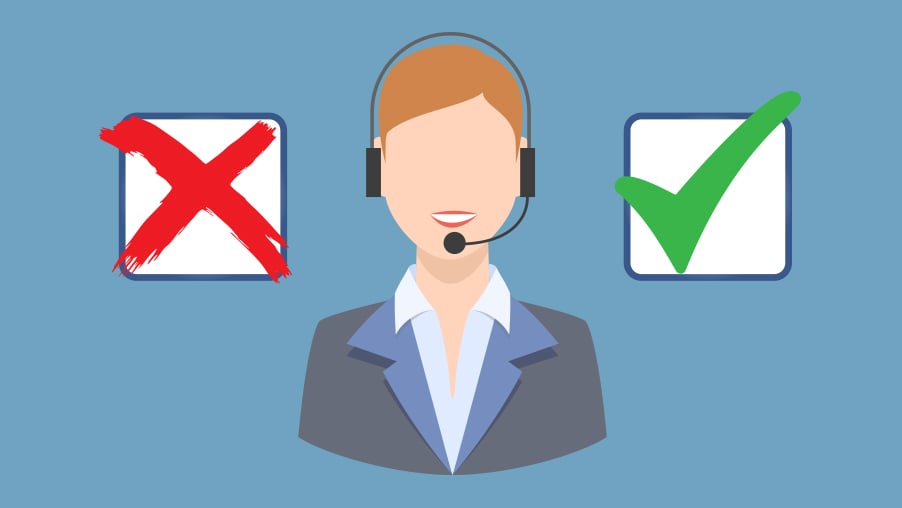How to Effectively Use Your Customer Service as a Growth Engine

How to Effectively Use Your Customer Service as a Growth Engine
We all know growth can be a challenge. You need to create new systems, hire new people, invest in new technology. But there is one area that many CEOs neglect when preparing for growth: the customer service team.
With growth, comes more customers, and with more customers, comes the need for more customer service. But when preparing for growth, companies often neglect to ensure they have enough agents to meet increased demand. They don’t want to spend the money, or figure they’ll add more capacity when they need it.
This is a huge mistake. And it’s particularly inexcusable if you’re making a marketing investment that could bring in a substantial number of customers. Many companies are reluctant to spend a bunch of money staffing up, only to leave agents idle if the demand doesn’t materialize. But having a few idle agents is much better than the alternative — providing such bad service that your customers have to post publicly on Facebook to get your attention.
As CEO of a customer service outsourcing company, I have seen this many times, when companies call us in desperate need of help to manage a massive backlog of customer service tickets. But I recently experienced it first-hand as a customer.
In my family, we love meal kits like Blue Apron, Hello Fresh, and Just Add Cooking. So, when we saw an ad on Facebook for a new meal kit that was cheaper than competitors, we jumped at the chance to try it. (We’re not sharing the company’s name because the point isn’t to call out this one company, but to illustrate a broader challenge with growth.)
It was Saturday night, at 8:30 P.M. Our box was supposed to arrive by 8. We wanted to go to bed, and didn’t want to have to keep checking the door. So my wife checked one final time, and emailed customer service letting them know the box was late. She received an automated response telling us the response time might be 48 hours, due to “strong order growth.”
We emailed again on Sunday night. On Monday, we received a message that our box had shipped. The box arrived Tuesday, three days — and three ignored emails — later than expected. The ice pack had melted; we threw out the food. We finally received a response from customer service the following Friday, after my wife left a public message on the company’s Facebook page.
The thing is, we might have tried this service again. If the box had been late, but the customer service team had handled it well, we would have been willing to give them another shot. It was the bad customer service that ultimately cost this company our business.
We can’t say it enough – when preparing for growth, you have to consider your customer service needs. But let’s say you’ve made this mistake. Your company is growing, and your customer service team can’t handle the volume. What should you do?
1. Reach out proactively about product issues
Don’t wait for your customers to contact you – contact them first. If this company had told us our box would be late, we would have been miffed. But we wouldn’t have been forced to email customer service when we should have been enjoying our weekend.
If the company had missed this opportunity on Saturday, they could have seized it on Monday. The shipment notification would have been an ideal opportunity to explain and apologize. Instead, they just wrote, “Your box is on its way!”
2. Reach out proactively about customer service delays
Similarly, contact your customers to let them know you have a backlog of tickets and need more time to respond. The company tried to do this by promising a 48-hour response time in their automated reply. But when they failed to meet that promise, they just set us up for another disappointment.
3. Explain what happened
Don’t send a generic apology. Send an honest, genuine explanation for why you failed. The response we finally received on Friday said, “I logged a complaint with our Logistics Team who will investigate your case.” This implies our case was a strange, one-off event, which I have a hard time believing. Even if it was, I’d expect a follow-up email with an actual explanation.
4. Offer appropriate compensation
If you want to salvage the customer, offer appropriate compensation. We were given a refund on the box, but that was really the bare minimum required, given they had failed to deliver the product we paid for. If they’d offered a free box, we might have been willing to give it another shot.
5. Fix the problem
If you’re preparing for growth, you probably need to hire more agents than you think. But if you’ve already made this mistake, you can still hire now. Granted, this company should probably focus on fixing their logistics first. But hopefully they’ll realize the importance of investing in customer service as well. The logistics team lost us, but the customer service team lost an opportunity to win us back.
This article was first published in Inc. Photo by Evan Kirby on Unsplash.
If you want to learn more about scaling customer support, download our e-book “Scaling Customer Support for Your Growing Business.”


